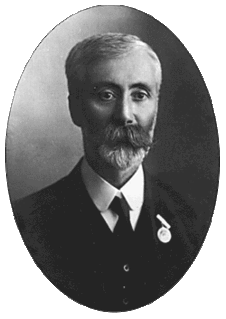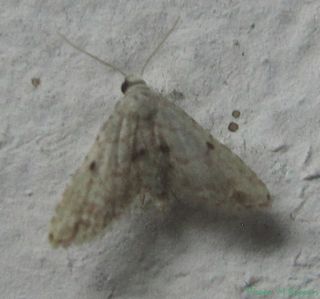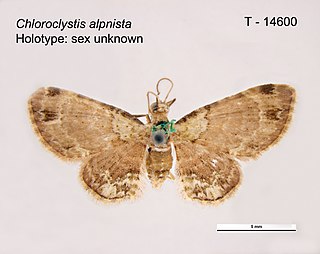
Joseph Henry Maiden was a botanist who made a major contribution to knowledge of the Australian flora, especially the genus Eucalyptus. This botanist is denoted by the author abbreviation Maiden when citing a botanical name.

The Linnean Society of New South Wales promotes the Cultivation and Study of the Science of Natural History in all its Branches and was founded in Sydney, New South Wales (Australia) in 1874 and incorporated in 1884.

Araeopteron is a genus of moths of the family Erebidae. The genus was erected by George Hampson in 1893.
Xyrosaris is a genus of moths of the family Yponomeutidae.

Eupitheciini is a tribe of geometer moths under subfamily Larentiinae, often referred to as pugs. The tribe was described by Tutt in 1896.

Macarostola is a genus of moths in the family Gracillariidae. The genus was erected by Edward Meyrick in 1907.

Chloroclystis alpnista is a moth in the family Geometridae. It is found in Australia (Queensland). Subspecies eupora was described from Bali.
Chloroclystis elaeopa is a moth in the family Geometridae. It was described by Alfred Jefferis Turner in 1908. It is found in Queensland, Australia.
Chloroclystis plinthochyta is a moth in the family Geometridae. It was described by Turner in 1931. It is endemic to Australia (Queensland).
Chloroclystis athaumasta is a moth in the family Geometridae. It was described by Turner in 1908. It is found in Australia (Queensland).
Chloroclystis celidota is a moth in the family Geometridae. It was described by Turner in 1931. It is found in Australia (Queensland) and on Dunk Island.
Chloroclystis perissa is a moth in the family Geometridae. It was described by Turner in 1908. It is found in Australia (Queensland).
Chloroclystis pauxillula is a moth in the family Geometridae. It is found in Australia (Queensland).
Gymnoscelis mesophoena is a moth in the Geometridae. It was described by Alfred Jefferis Turner in 1907. It is found in Australia (Queensland) and on the St Matthias Islands of Papua New Guinea.
Gymnoscelis callichlora is a moth in the family Geometridae. It was described by Alfred Jefferis Turner in 1907. It is found in Australia (Queensland).
Gymnoscelis chlorobapta is a 9 millimetres (0.35 in) long moth in the family Geometridae. It is found in Australia (Queensland).
Gymnoscelis kennii is a moth in the family Geometridae. It was described by Alfred Jefferis Turner in 1922. It is found in Australia (Queensland).
Gymnoscelis spodias is a moth in the family Geometridae. It was described by Alfred Jefferis Turner in 1922. It is found in Australia (Queensland).
Gymnoscelis tanaoptila is a moth in the family Geometridae. It was described by Alfred Jefferis Turner in 1907. It is found in Australia (Queensland).
Heosphora is a genus of moths in the family Pyralidae. The genus was first described by Edward Meyrick in 1882. The type species is Anerastia psamathella Meyrick, 1879, designated as such by George Hampson in 1901. All Heosphora species are found in Australia.





